Trapping Turkeys with PGC
As hunters know all too well, waiting for wildlife to arrive where you want them to be is often a gamble and a test of patience. Trapping turkeys for research is no different.
Seeing wild turkeys is never a guarantee, and the hours of preparation that are required of biologists for their field work can sometimes feel anticlimactic. But other times, it pays off in an exciting few seconds of shooting a rocket net, a few hours of handling wild birds and the final seconds of watching them fly back into the forest.
Before the break of dawn, a group of Pennsylvania Game Commission research crew members huddled in the parking lot to discuss the plan, the protocol for handling birds and the goals of this project.
(See more details about the project here.)
Crew members moved swiftly and silently in the dark to set up the rocket net, using only the red light of their headlamps. The rocket device is camouflaged in hay and corn is laid out as bait.
Now, PGC wildlife biologists Andrew Cushman and Alex Sessock sit together in a PGC truck. Crew members Rachel Olver and Karissa Hough are in a truck to the left and to the right, Regional Wildlife Management Supervisor, Kevin Wenner, along with additional PGC staff sit in another vehicle.
Cushman and Sessock talk about the project and hope that their morning vigilance will be rewarded by an afternoon of banding and gathering data from captured wild turkeys.
Last month, I had a chance to watch them present with the PGC at Pennsylvania's 50th Rendezvous and Banquet, but nothing compares to spending three hours with them asking questions, getting to know why they are passionate about wildlife conservation and hoping for the same outcome of netting some wild turkeys. Hearing about days in the field is an added bonus.
Cushman told me about a site he went to a while ago where he and a colleague set up in a turkey blind. They started noticing this strange smell when the wind would blow, and when he peaked out the blind window, he saw an old bowl of spaghetti. He laughed as he explained that the retired homeowner likes to put out food for the wildlife. Of course, all feeding of wildlife should be absolutely avoided.
Around 8:30 a.m., two hours after setting up the rocket net, we saw one gobbler run across the open yard. He didn’t stop at the bait pile, and just as quickly as he came into view, he disappeared into the tree line. Cushman and Sessock were excited to see signs of turkeys, something they didn't see at the site yesterday.
At 9:30 a.m., they noticed movement in the woods. They passed binoculars back and forth and started talking very quietly, holding their breath, hoping the birds would come out of the woods and take to the bait pile. They texted the rest of the crew. Ten minutes went by, and a small group of gobblers ran directly into the bait site. The net wasn’t deployed yet because the team needed hens for this project. We continued to wait, eyes glued to the baited area.
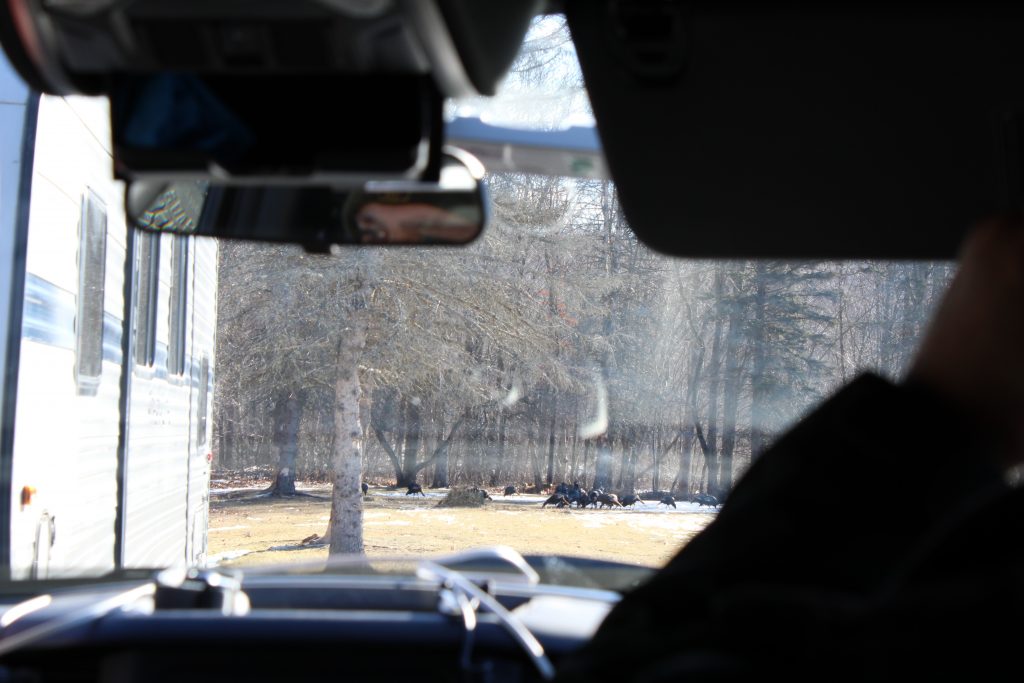
At 10:05 a.m., hens charged out of the tree line, but careful timing was crucial for detonating the net. A few birds were too close to the rocket net, and detonating too soon could have risked their mortality. While we waited from them to move closer to the bait, Sessock explained to me how these next few minutes would pan out:
“Andrew is going to detonate the rocket net, and when he does, everyone will get out and run toward the birds to control them, while Andrew stays here to make sure the detonator isn’t charged and won’t go off again.”
He looks through the binoculars, breathes in, and says: “Ok, now.”
Cushman detonates the rocket net. BOOM!
Sessock gets out of the truck and starts to run, joined by the other PGC crew members. It was exciting to watch them in action, each person knowing exactly where to go and what to do. They started laying blankets over birds and slowly started untangling them from the net. Boxes were assembled and the processing began. Everyone spoke quietly to help keep the birds as calm as possible.
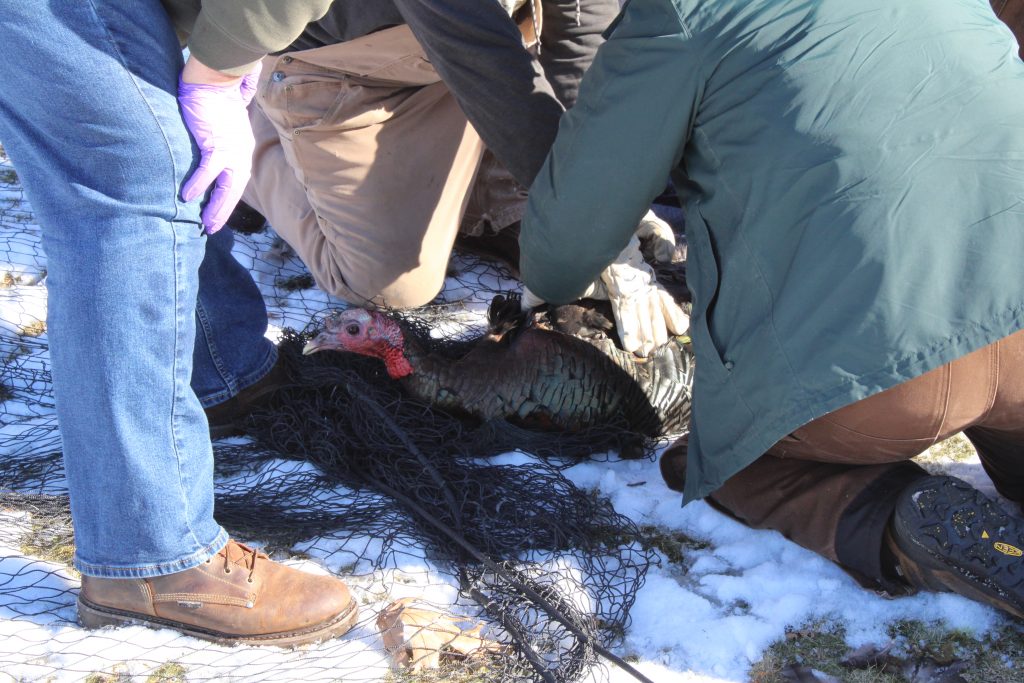
By 10:37 a.m., all of the birds were detangled and in boxes, and the team got to work weighing them and setting up a pop-up science lab. The landowner, who heard the blast of the rocket net, came out to watch the biologists as they processed each bird.
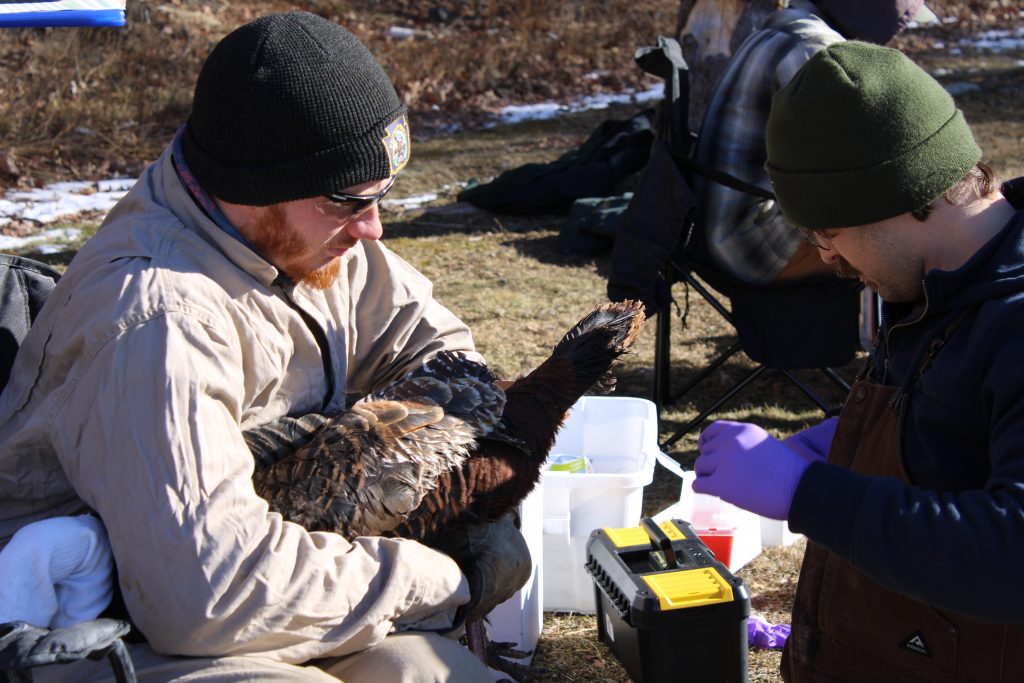
One hen was taken out of her box, and a sock was put on her head to keep her calm during the process. One crew member sat in a lawn chair securely holding the bird like a football, while another placed a band on her leg, took samples and attached the transmitter. After the transmitter was fitted, the hen was placed back in her box for about 20 minutes, and then she was released along with at least one other turkey. Since turkeys remain in flocks during winter, the crews release birds in groups. There were six hens to process, and each operation went swiftly.
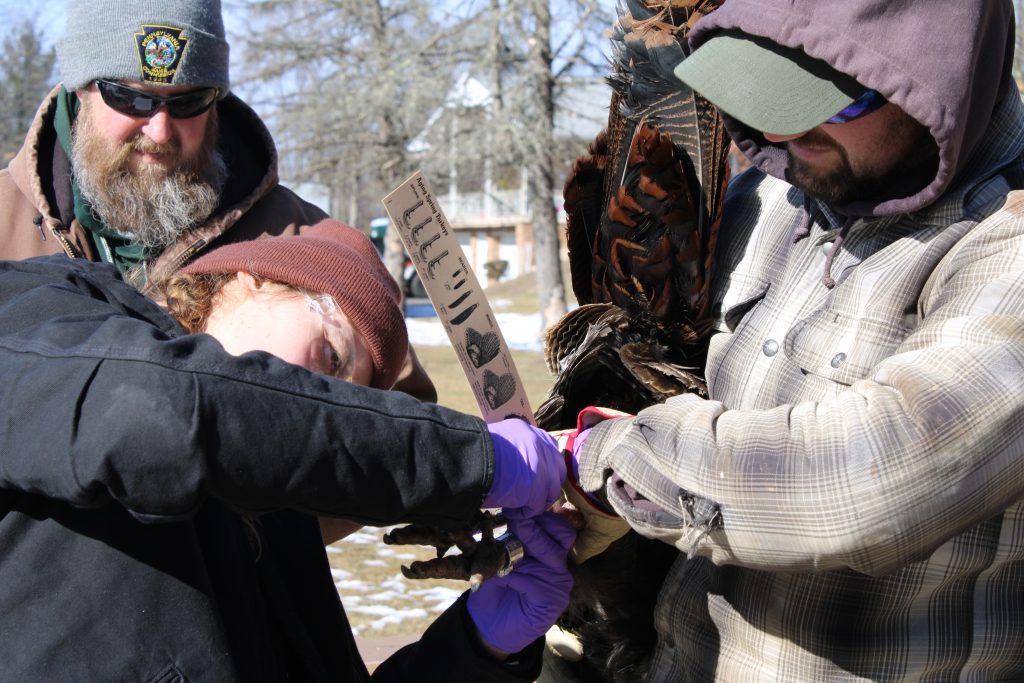
The team moved on to the gobblers, which were given a leg band, and their spurs and beards were measured. Sessock took a bird out of the box and noticed something was off about this bird. It was a female!
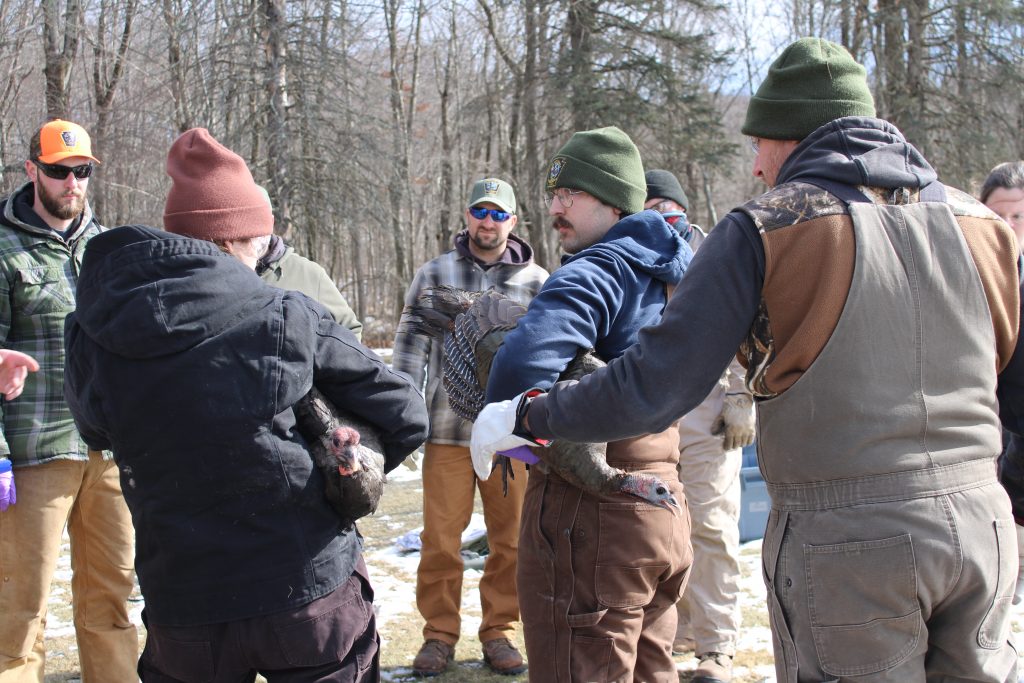
The team was excited, because seven was the number of transmitters they wanted to deploy that day. This imposter bird allowed them to reach their goal. But before she was taken for samples, she was held up next to a gobbler to showcase the differences between male and female birds for those who were still learning (males have black-tipped breast feathers while those of females are brown-tipped).
At 12:23 p.m., the last few gobblers were released, and the final count was three long beards and five jakes. The team, feeling victorious, started to plan a celebratory team lunch.
Turkey trapping is a lot of fun for the obvious reasons. That blast of the rocket net cannon and the boots of ten Game Commission staff literally hitting the ground, running. But all of those moments happen in the blink of an eye, and what truly matters are the slower moments in between — the quiet patience, as people and nature intersect.
